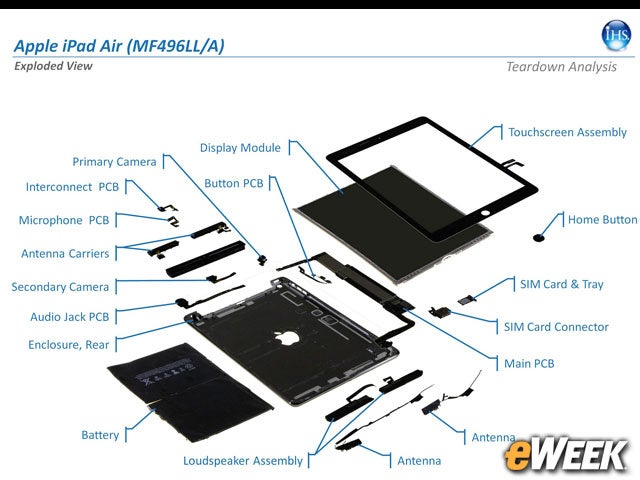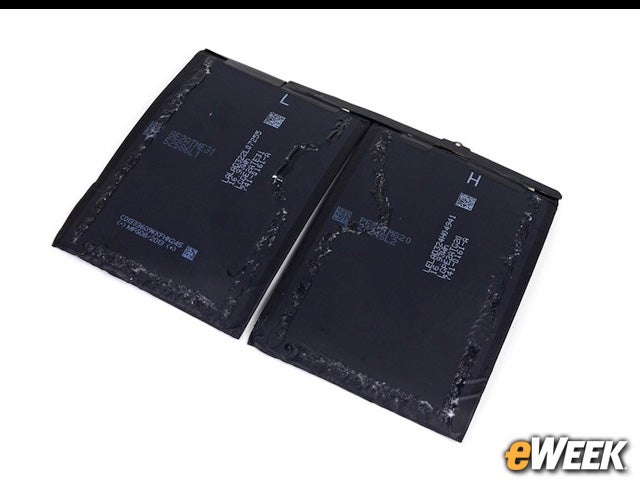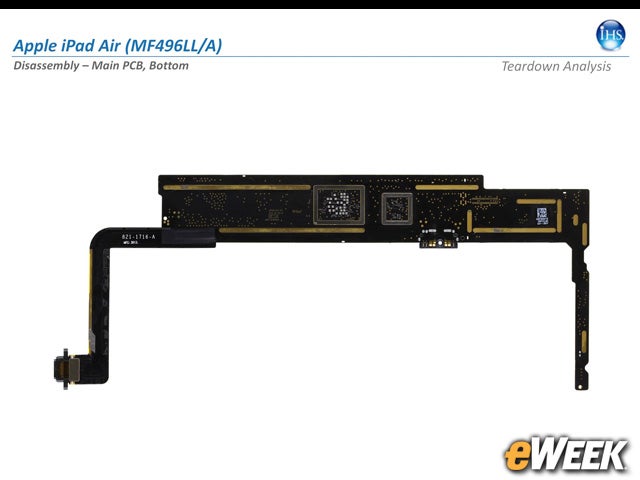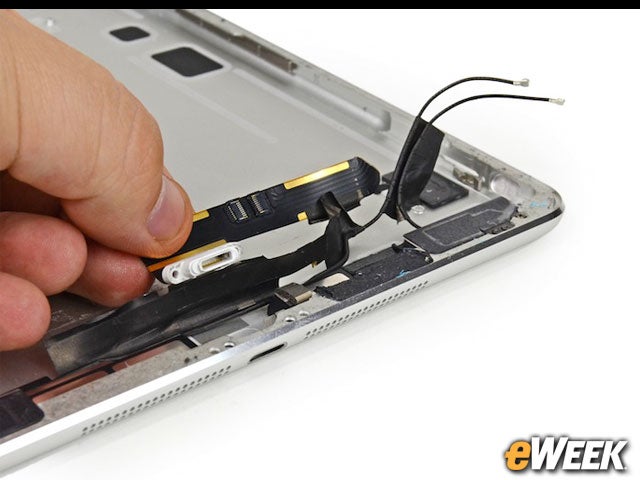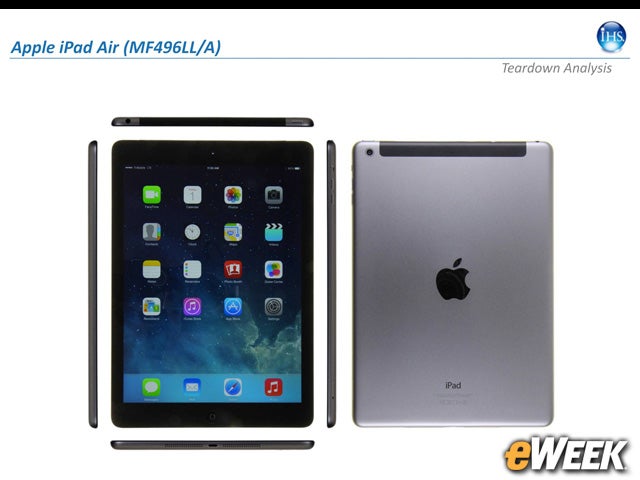eWEEK content and product recommendations are editorially independent. We may make money when you click on links to our partners. Learn More.
2Apple iPad Air: Proceed with Care
The Apple iPad Air is a beauty, weighing in at just a pound and featuring a profile a full 20 percent thinner than the fourth-generation iPad. But go easy on it, is the lesson of iFixit’s teardown. “With a hard-to-repair device, the fix is either expensive or impossible,” blogged Miro Djuric. iFixit gave it a rating of just 2 on a scale of 1 to 10. (Image: Apple)
3Thinning Down the iPad
4What the iPad Air Costs Apple
The lowest-end iPad Air has a bill of materials (BOM) of $274, $42 less than the third-generation iPad, says IHS. While the new display, at $90, is pricier than the older one, Apple found savings by using some of the same parts and suppliers as it does for the iPhone 5S and 5C. Apple’s A7 processor is an example, though the version in the Air has a metal top “that acts as a heat sink,” says IHS. (Image: IHS)
5Opening the Air Is Not for the Undetermined
iFixit had no easy time cracking into the iPad Air. It used a warm compress to melt the glue, suction cups to lift, and guitar picks wedged in all around. “Apple has secured the digitizer glass in place with more than ample amounts of adhesive,” reported iFixit. But eventually, open it did. Beneath the revealed black tray are the batteries. (Image: iFixit)
6“Nuke, Heat, Scrape, Repeat”
A few turns of the screwdriver and the batteries were revealed. That is where progress pretty much came to a standstill. Calling it “the worst battery ever,” iFix described a process of “nuke, heat, scrape, repeat” with its warm compress, followed by discovering that the battery was screwed in as well, and then also that the motherboard had to come in first. In summary, Apple would like the battery to stay put. (Image: iFixit)
7Battery Life
Here, triumphant, iFixit shows off the removed batteries. IHS reports that, despite promising (and delivering) 10 hours of battery life, Apple was able to reduce the capacity of the battery by 23 percent, from 42.5 watt hours to 32.9. This is most likely because of the new backlit display’s lower power consumption, it explained. (Image: iFixit)
8Chip Changes
IHS reports that unlike the processor and baseband segments, the RF/power amplifier (PA) modules in the iPad Air are different than those in the 5S, “in a way that makes a big difference to Apple.” The RF and PA in the Air support 4G LTE bands for all carriers, which isn’t the case in the iPhone 5S.
9iFixit, Feeling Generous
10Apple iPad Air, in Summary
iFixit had a laundry list of complaints about the Air, from the “gobs and gobs” of glue to the foam sticky tape adhering the front panel to the LCD and the likelihood of cracking the glass during a repair. To the list of cons, IHS adds the nugget that while Apple charges $100 more to upgrade from 16GB to 32GB, the upgraded model costs Apple only $8.40 more.
11Slimmer iPad, Fatter Margins
The iPad Air is now available in the U.S. at a starting price of $499 for the WiFi-only model and $629 for the WiFi plus cellular version. “While the iPad Air slims down in size, the profit margins [for Apple] are getting fatter,” Andrew Rassweiler, senior director of cost benchmarking services at IHS, said in a Nov. 5 report. (Image: Apple)


